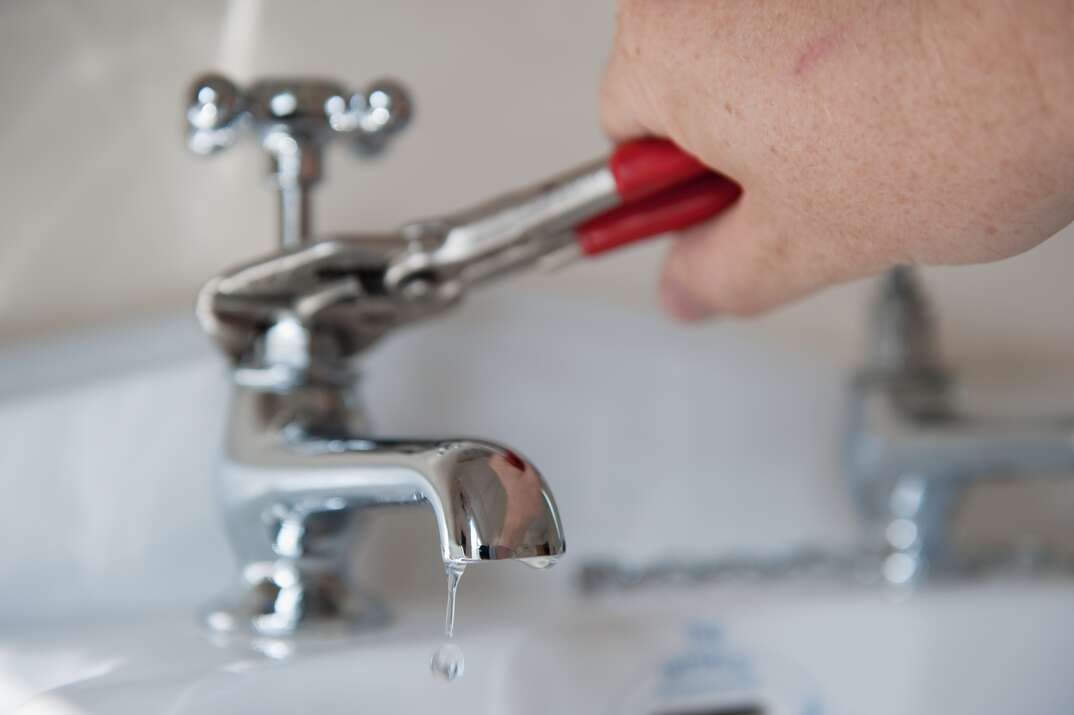We have come across this article relating to Why Do My Plumbing Pipes Make A Knocking Noise listed below on the web and reckoned it made good sense to write about it with you in this article.

To detect noisy plumbing, it is essential to identify first whether the undesirable noises take place on the system's inlet side-in various other words, when water is transformed on-or on the drain side. Noises on the inlet side have differed causes: extreme water stress, worn shutoff as well as tap parts, improperly connected pumps or other home appliances, inaccurately put pipe bolts, and plumbing runs having too many tight bends or various other restrictions. Noises on the drain side generally originate from poor place or, as with some inlet side noise, a design containing limited bends.
Hissing
Hissing sound that takes place when a tap is opened a little usually signals excessive water pressure. Consult your neighborhood water company if you think this trouble; it will certainly be able to inform you the water pressure in your location as well as can install a pressurereducing valve on the incoming water supply pipe if needed.
Other Inlet Side Noises
Squeaking, squealing, scratching, breaking, and also touching normally are triggered by the development or contraction of pipes, typically copper ones supplying warm water. The sounds happen as the pipes slide versus loosened bolts or strike nearby home framing. You can usually identify the location of the issue if the pipes are exposed; simply adhere to the sound when the pipelines are making sounds. More than likely you will certainly uncover a loosened pipeline wall mount or a location where pipes exist so near flooring joists or other mounting items that they clatter against them. Connecting foam pipe insulation around the pipes at the point of contact must fix the problem. Make certain bands and also wall mounts are safe and provide appropriate assistance. Where possible, pipe fasteners should be connected to large architectural elements such as foundation walls instead of to mounting; doing so minimizes the transmission of resonances from plumbing to surface areas that can enhance and also move them. If connecting fasteners to framework is inescapable, wrap pipes with insulation or various other durable product where they contact fasteners, and also sandwich completions of brand-new bolts in between rubber washers when mounting them.
Fixing plumbing runs that deal with flow-restricting limited or many bends is a last hope that must be carried out only after seeking advice from a knowledgeable plumbing service provider. Regrettably, this circumstance is fairly usual in older homes that may not have actually been developed with indoor plumbing or that have actually seen a number of remodels, especially by amateurs.
Chattering or Shrieking
Intense chattering or screeching that occurs when a valve or faucet is switched on, which normally disappears when the fitting is opened totally, signals loose or malfunctioning internal parts. The remedy is to replace the shutoff or tap with a new one.
Pumps as well as home appliances such as washing machines and dishwashing machines can move electric motor noise to pipelines if they are poorly attached. Connect such things to plumbing with plastic or rubber hoses-never inflexible pipe-to isolate them.
Drain Sound
On the drain side of plumbing, the chief objectives are to get rid of surface areas that can be struck by falling or hurrying water as well as to shield pipes to include inevitable sounds.
In new construction, bath tubs, shower stalls, commodes, and wallmounted sinks and basins should be set on or against resistant underlayments to lower the transmission of audio with them. Water-saving bathrooms and faucets are less noisy than conventional designs; install them rather than older kinds even if codes in your area still allow making use of older components.
Drains that do not run vertically to the basement or that branch into straight pipe runs sustained at floor joists or other mounting existing particularly problematic sound troubles. Such pipes are huge enough to emit considerable vibration; they likewise lug significant amounts of water, which makes the circumstance even worse. In brand-new building and construction, define cast-iron soil pipelines (the large pipes that drain pipes bathrooms) if you can afford them. Their massiveness consists of much of the sound made by water passing through them. Likewise, stay clear of routing drainpipes in walls shown bedrooms and also areas where individuals gather. Walls consisting of drains need to be soundproofed as was explained previously, utilizing double panels of sound-insulating fiberboard and wallboard. Pipelines themselves can be covered with unique fiberglass insulation created the purpose; such pipelines have an invulnerable plastic skin (sometimes including lead). Outcomes are not constantly satisfactory.
Thudding
Thudding noise, often accompanied by shivering pipes, when a faucet or device shutoff is turned off is a condition called water hammer. The sound and also vibration are triggered by the resounding wave of stress in the water, which suddenly has no area to go. In some cases opening a valve that releases water promptly into a section of piping consisting of a constraint, elbow, or tee fitting can generate the exact same problem.
Water hammer can generally be cured by setting up fittings called air chambers or shock absorbers in the plumbing to which the trouble shutoffs or faucets are attached. These devices enable the shock wave produced by the halted circulation of water to dissipate in the air they contain, which (unlike water) is compressible.
Older plumbing systems may have brief upright areas of capped pipe behind wall surfaces on tap competes the exact same function; these can ultimately full of water, reducing or damaging their performance. The cure is to drain pipes the water supply totally by turning off the major supply of water shutoff as well as opening all taps. After that open up the main supply valve as well as shut the taps one at a time, beginning with the tap nearest the valve and ending with the one farthest away.
DIAGNOSE UNWANTED PLUMBING NOISES
Did You Hear That?
One of the first steps to take when diagnosing noisy plumbing is to determine whether the mysterious sound is occurring when your water is turned on or if it is a result of draining water. Noises on the inlet side (or when your water is turned on) could be caused by: excessive water pressure, worn valve or faucet parts, improperly connected pumps or other appliances, incorrectly placed pipe fasteners, and plumbing runs containing too many tight bends or other restrictions. Noises on the drain side usually stem from poor location or a possible pipe layout containing too many tight bends.
Hissing
A hissing noise that occurs when a faucet is opened slightly generally signals excessive water pressure. If you encounter hissing sounds call your locate water company, they will be able to tell you if the water pressure in your area may be the culprit. They can also install a pressure reducing valve on the incoming water supple pipe to help regulate the pressure.
Thudding
Thudding noise, often accompanied by shuddering pipes, when a faucet or appliance valve is turned off is a common condition referred to as a water hammer. The noise and vibration are caused by the reverberating wave of pressure in the water, which suddenly has no place to go. Opening a valve that discharges water at a rapid pace into a section of piping containing a restriction, elbow, or other fitting can also produce water hammer.
Water hammer can usually be cured by installing fittings called air chambers or shock absorbers in the plumbing to which the problem valves or faucets are connected. These devices allow the shock wave created by the halted flow of water to dissipate in the air they contain, which (unlike water) is compressible.
Older plumbing systems may have short vertical sections of capped pipe behind walls on faucet runs for the same purpose; these can eventually fill with water, reducing or destroying their effectiveness. The cure is to drain the water system completely by shutting off the main water supply valve and opening all faucets. Then open the main supply valve and close the faucets one at a time, starting with the faucet nearest the valve and ending with the one farthest away.
Chattering or Screeching
Intense chattering or screeching that occurs when a valve or faucet is turned on, and that usually disappears when the fitting is opened fully, signals loose or defective internal parts. In most cases, the only solution is to replace the defective valve or faucet with a new one.
Pumps and appliances such as washing machines and dishwashers can also transfer motor noise to pipes if they are improperly connected. When installing new appliances always link them to plumbing with plastic or rubber hoses and never use rigid pipe. This will dramatically cut down on the amount of noise create when the appliance is in use.
Other Mysterious Noises
Creaking, squeaking, scratching, snapping, and tapping noises are commonly caused by the expansion or contraction of copper pipes used to supply hot water. The sounds can occur as the pipes slide against loose fasteners or strike nearby house framing.
If you can pinpoint the problem by following the sound to an exposed pipe you may discover a lose pipe hanger or other obstruction that the pipes can clatter against. Attaching foam pipe insulation around the pipes at the contact points will lessen the transmission of vibration from plumbing to surfaces that can amplify the sounds.
When replacing or installing new pipe hangers try to fasten them to larger structural elements that will work to dampen or disperse the sound and always sandwich the ends of new fasteners between rubber washers.
Drain Pipe Noise
When dealing with noises produced by drain pipes the primary goal is to eliminate and surfaces that can be struck by falling water or rushing water and to insulate the pipes to contain any avoidable sounds.
When replacing toilets or faucets, inquire about water-saving alternatives as they are less noisy than conventional models. Upgrading your fixtures can be an easy solution to stubborn plumbing sounds.
When having old plumbing repaired or replaced avoid routing drain pipes in walls shared with bedrooms or rooms where your family and guests often gather. Walls containing drain pipes need to be soundproofed and the pipes themselves should be wrapped with specially designed fiberglass insulation.
https://www.horizonservices.com/about-us/blog/diagnose-unwanted-plumbing-noises/

We were introduced to that write-up about How To Fix Noisy Pipes through an acquaintance on our other site. Be sure to take the opportunity to distribute this post if you liked it. Kudos for your time. Visit us again soon.
Schedule Today
 Kelly McGillis Then & Now!
Kelly McGillis Then & Now! Sam Woods Then & Now!
Sam Woods Then & Now! Burke Ramsey Then & Now!
Burke Ramsey Then & Now! Mason Reese Then & Now!
Mason Reese Then & Now! Christy Canyon Then & Now!
Christy Canyon Then & Now!